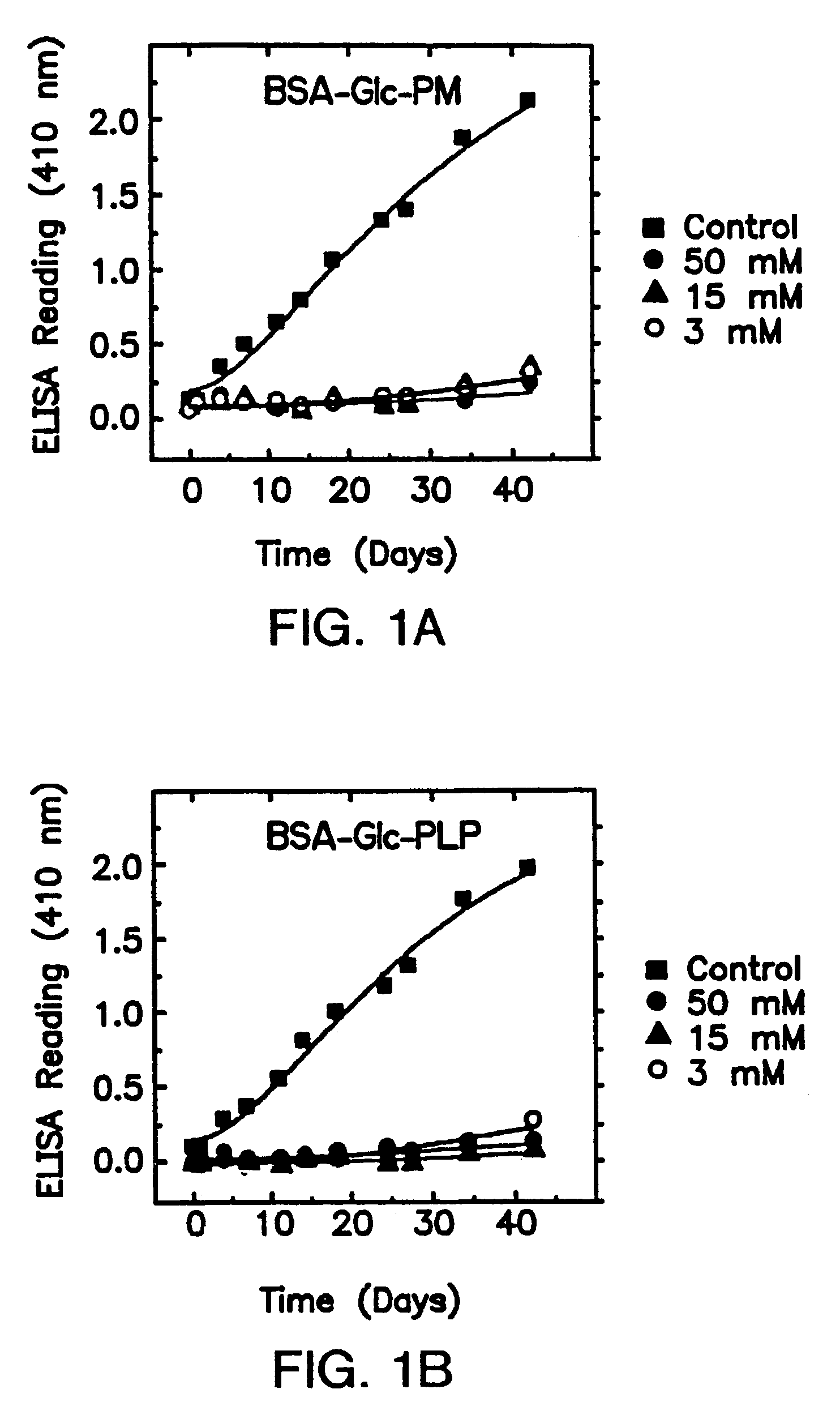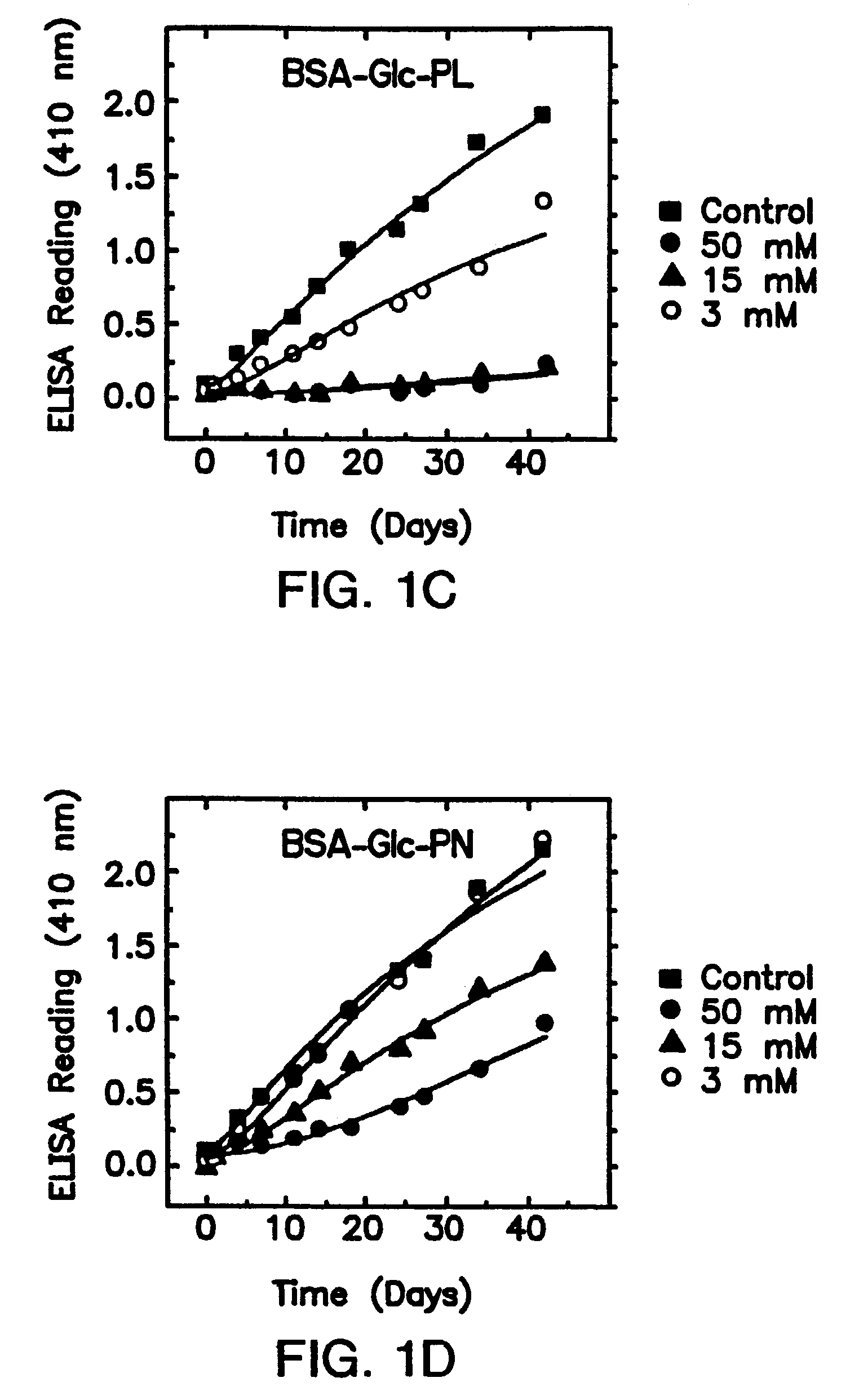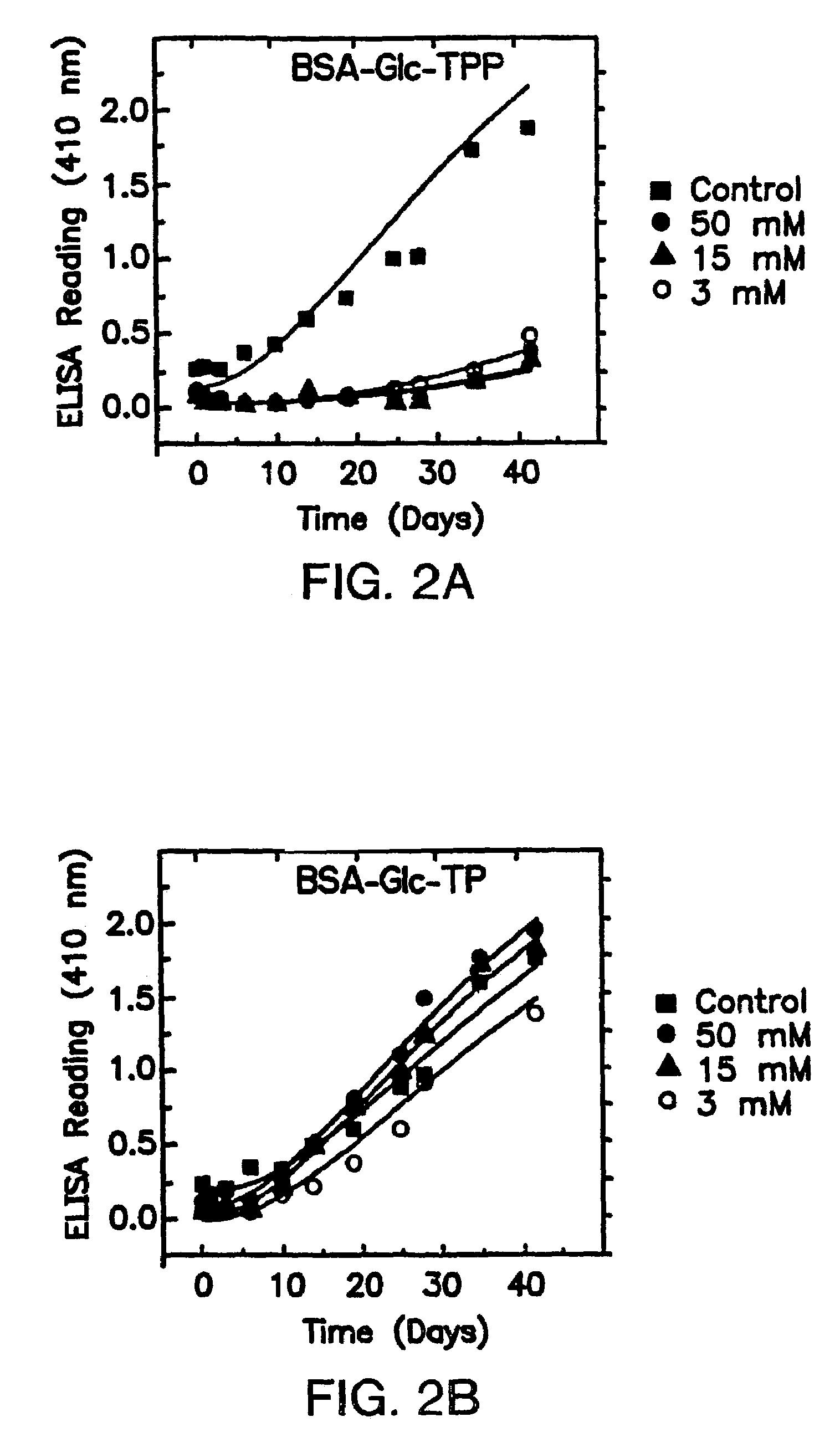Methods for treating diabetic neuropathy
a diabetic neuropathy and end product technology, applied in the field of can solve the problems of elucidating the mechanism of formation of a variety of ages, poorly characterized advanced glycation end products (ages), and chronic tissue damage, and achieves slow and irreversible maillard “browning” reactions, reduces bioavailability, and long reaction times
- Summary
- Abstract
- Description
- Claims
- Application Information
AI Technical Summary
Benefits of technology
Problems solved by technology
Method used
Image
Examples
example 1
Thiamine Pyrophosphate and Pyridoxamine Inhibit the Formation of Antigenic Advanced Glycation End-Products from Glucose: Comparison with Aminoguanidine
[0092]Some B6 vitamers, especially pyridoxat phosphate (PLP), have been previously proposed to act as “competitive inhibitors” of early glycation, since as aldehydes they themselves can form Schiff bases adducts with protein amino groups (Khatami et al., 1988, Life Sciences 43:1725–1731) and thus limit the amount of amines available for glucose attachment. However, effectiveness in limiting initial sugar attachment is not a predictor of inhibition of the conversion of any Amadori products formed to AGEs. The instant invention describes inhibitors of “late” glycation reactions as indicated by their effects on the in vitro formation of antigenic AGEs (Booth et al., 1996, Biochem. Biophys. Res. Com. 220:113–119).
[0093]Chemicals Bovine pancreatic ribonuclease A (RNase) was chromatographically pure, aggregate-free grade from Worthington Bi...
example 2
Kinetics of Non-enzymatic Glycation: Paradoxical Inhibition by Ribose and Facile Isolation of Protein Intermediate for Rapid Post-Amadori AGE Formation
[0108]While high concentrations of glucose are used to cause the non-enzymatic glycation of proteins, paradoxically, it was found that ribose at high concentrations is inhibitory to post-Amadori AGE formation in ribonuclease by acting on the post-Amadori “late” stages of the glycation reaction. This unexpectedly inhibitory effect suggests that the “early” reactive intermediates, presumably Amadori products, can be accumulated with little formation of “late” post-Amadori AGE products (AGEs; Maillard products). Investigation into this phenomenon has demonstrated: (1) ability to define conditions for the kinetic isolation of Amadori (or post-Amadori) glycated intermediate(s); (2) the ability study the fast kinetics of buildup of such an intermediate; (3) the ability to study the surprisingly rapid kinetics of conversion of such intermedi...
example 3
In Vitro Inhibition of the Formation of Antigenic Advanced Glycation End-Products (AGEs) by Derivatives of Vitamins B1 and B6 and Aminoguanidine. Inhibition of Post-Amadori Kinetics Differs from that of Overall Glycation
[0143]The interrupted glycation method for following post-Amadori kinetics of AGE formation allows for the rapid quantitative study of “late” stages of the glycation reaction. Importantly, this method allows for inhibition studies that are free of pathways of AGE formation which arise from glycoxidative products of free sugar or Schiff base (Namiki pathway) as illustrated in Scheme I. Thus the interrupted glycation method allows for the rapid and unique identification and characterization of inhibitors of “late” stages of glycation which lead to antigenic AGE formation.
[0144]Among the vitamin B1 and B6 derivatives examined, pyridoxamine and thiamine pyrophosphate are unique inhibitors of the post-Amadori pathway of AGE formation. Importantly, it was found that effica...
PUM
| Property | Measurement | Unit |
|---|---|---|
| concentration | aaaaa | aaaaa |
| time | aaaaa | aaaaa |
| pH | aaaaa | aaaaa |
Abstract
Description
Claims
Application Information
 Login to View More
Login to View More - R&D
- Intellectual Property
- Life Sciences
- Materials
- Tech Scout
- Unparalleled Data Quality
- Higher Quality Content
- 60% Fewer Hallucinations
Browse by: Latest US Patents, China's latest patents, Technical Efficacy Thesaurus, Application Domain, Technology Topic, Popular Technical Reports.
© 2025 PatSnap. All rights reserved.Legal|Privacy policy|Modern Slavery Act Transparency Statement|Sitemap|About US| Contact US: help@patsnap.com



